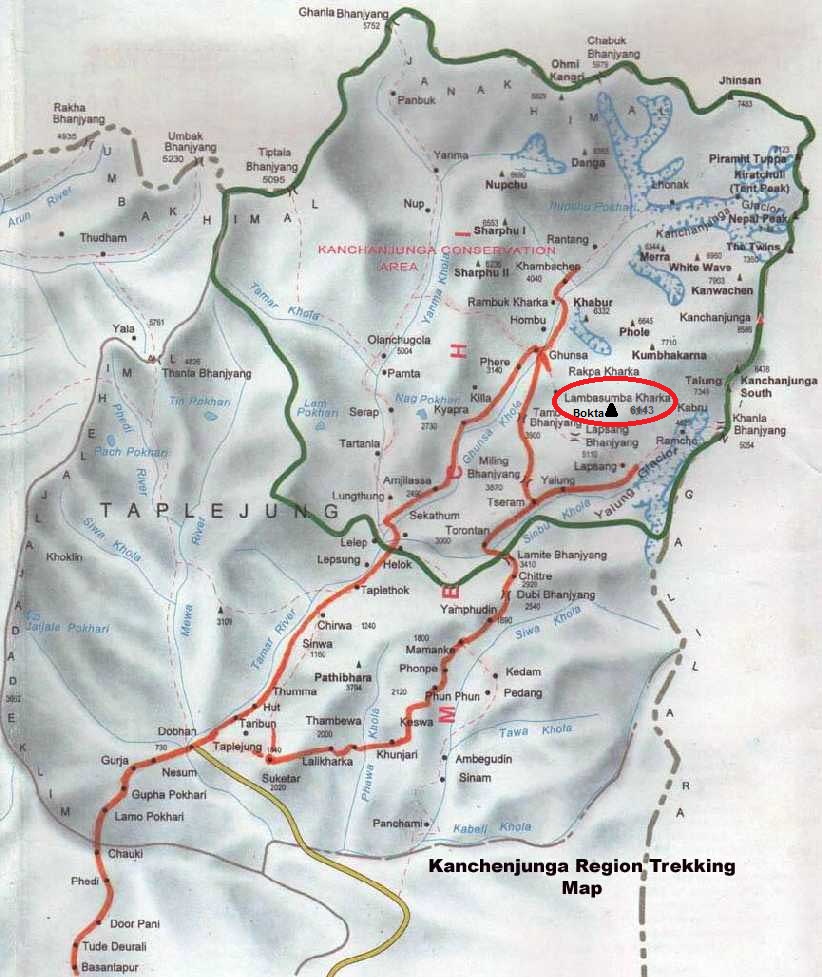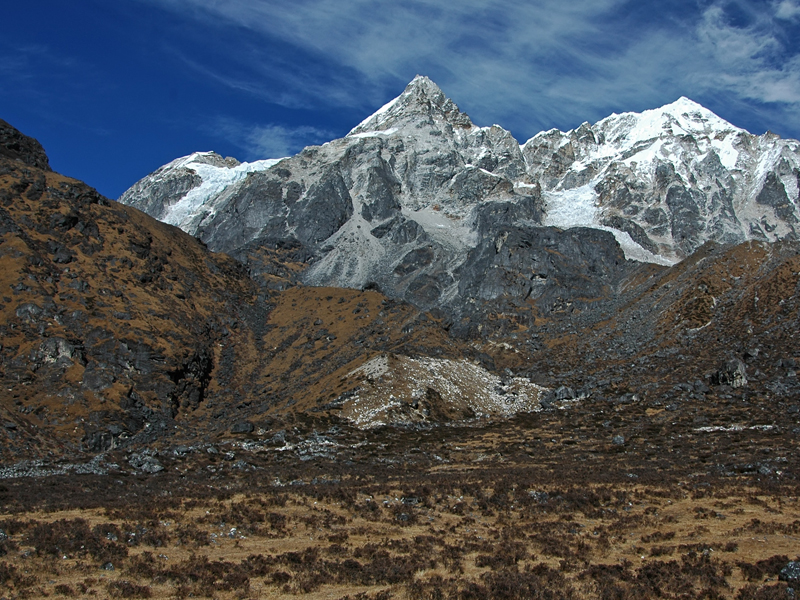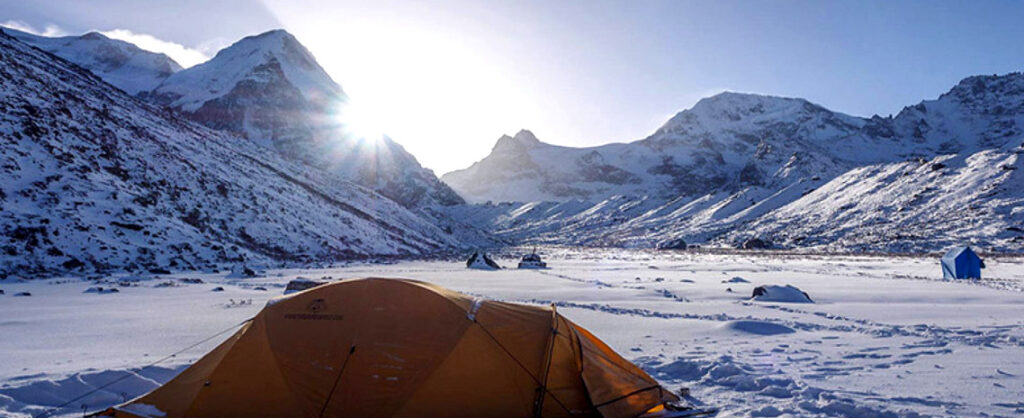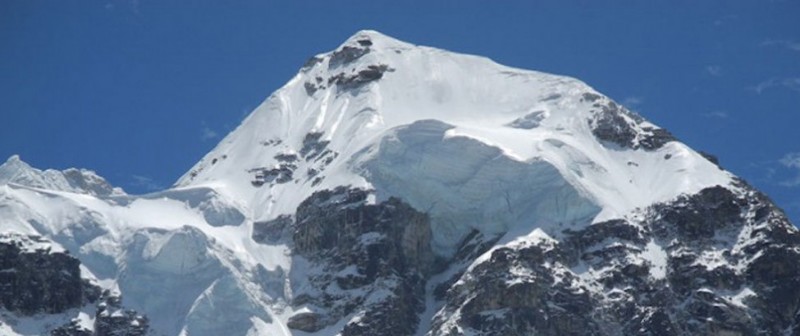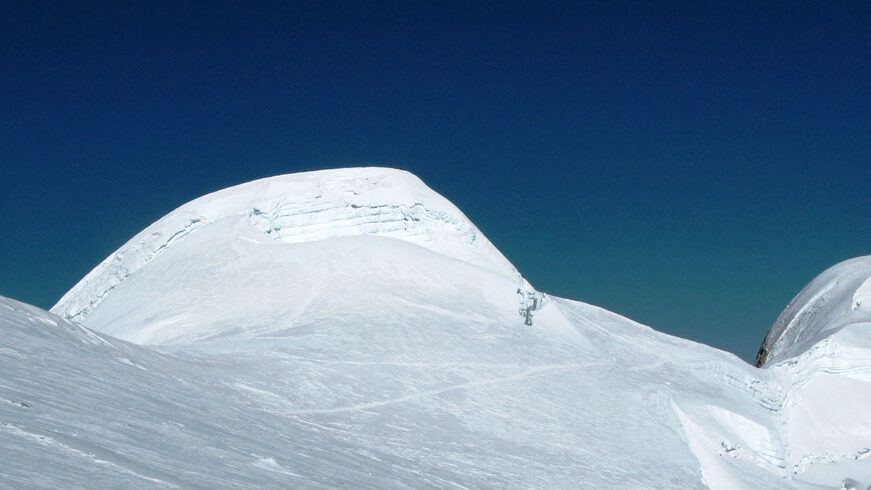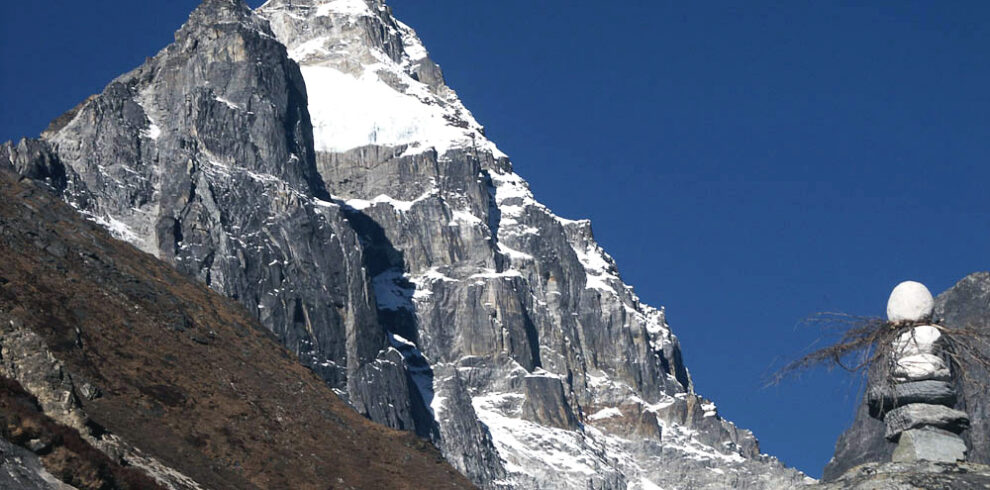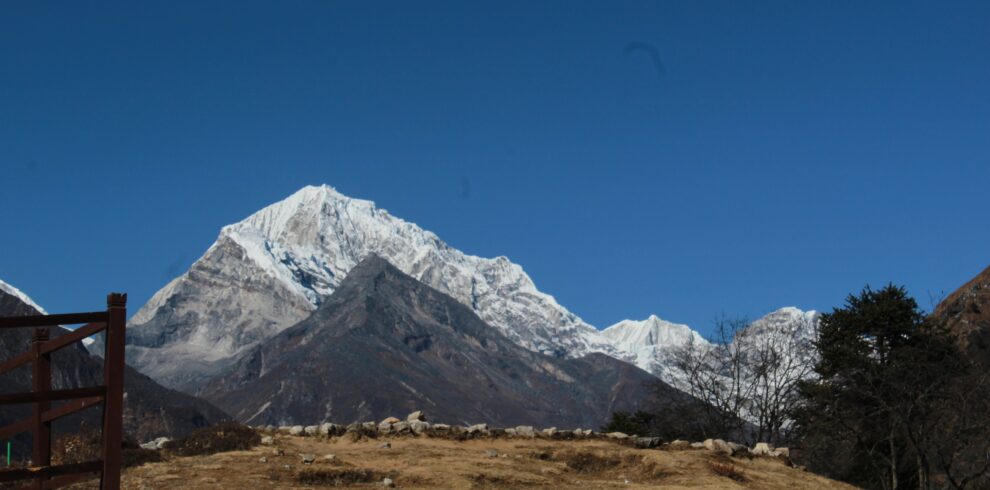Overview
Bokta Peak Climbing is renowned as one of the finest climbs in the Kanchenjunga Region, situated in the Taplejung district of Eastern Nepal at an elevation of 6,143 meters. This trekking peak, adjacent to Mt. Kanchenjunga (the third highest mountain), offers breathtaking vistas of prominent peaks such as Mount Kanchenjunga (8,586 meters), Kumbhakarna (7,710 meters), Pico Dhormo (6,850 meters), and Nupchu (6,690 meters).
Since receiving climbing approval in 2002, Bokta Peak has gained popularity among adventurous climbers. Despite its fewer visitors, the locals extend warm and friendly hospitality, influenced by Tibetan culture and traditions.
Ascending the Bokta Peak Summit demands a high level of commitment and prior peak climbing experience. The journey involves challenging sections with technical aspects that climbers must navigate. Proficiency in using climbing gear is essential for a successful ascent.
This expedition offers an exhilarating climbing experience and the chance to explore untouched lush valleys, awe-inspiring landscapes, and the companionship of welcoming locals.
Highlights
- The summit of Bokta Peak Climbing in Nepal reaches an elevation of 6,143 meters
- Bokta Peak Mountaineering offers stunning panoramic views of prominent peaks, including Mt. Kanchenjunga at 8,586 meters, Kumbhakarna at 7,710 meters, Dhormo Peak at 6,850 meters, Nupchu at 6,690 meters, and various other surrounding high peaks.
- Bokta Peak Trekking is a less crowded and less visited destination.
- Discover the lesser-traveled area of Kanchenjunga and immerse yourself in the hospitality of the warm and friendly locals, who are shaped by the Tibetan way of life.
Itinerary
After meeting you at the airport, we will drive you to your accommodation. We will also provide you with a briefing on your trek. You're free to tour the city for the remainder of the day.
Embark on your trek with our dedicated preparation day, meticulously designed for an unforgettable journey. Explore local attractions, finalize permits, and receive essential briefings from experienced guides. Utilize this time to fine-tune your gear, understand emergency procedures, and recharge before immersing yourself in breathtaking landscapes.
Following breakfast at the hotel, we'll be transported to the domestic airport for a flight from Kathmandu to Biratnagar. The flight duration is approximately forty-five minutes. Upon arrival in Biratnagar, we will embark on a five-to-six-hour drive to reach Taplejung, the initial point of the trek. Our overnight stay will be in Taplejung, and the trek is set to commence the next day.
The starting day of our trek commences as we descend along a trail that leads to the Tamur River, traversing through terraced farmland. Crossing the river is facilitated by a suspension bridge over the Tamur. Subsequently, the path begins a gradual ascent, meandering through picturesque paddy fields, ultimately reaching the small village of Mitlung, where the local residents rely heavily on agriculture.
Today, we'll depart from Mitlung and trek for 4 to 5 hours to reach Chiruwa. Along the way, we'll traverse several charming villages, including Sinwa, Tawa, and Thiwa. The local residents in these villages express enthusiasm upon encountering visitors. After a brief pause in Sinwa, our trek proceeds through Tawa before ascending to cross a suspension bridge at Thiwa. The journey continues until we reach Chiruwa for our overnight accommodation.
Moving away from the beautiful village of Chiruwa, our journey today leads us to Sekathum. In route, we'll make a necessary stop at the Park's Registration Office for registration before crossing the river. The trail for today involves a combination of uphill and downhill sections. After registering at the park's office and crossing the river, we continue our trek on a level path for a stretch. Subsequently, the trail descends all the way to the Tamur River, which we cross before reaching Sekathum.
Commencing from Sekathum, we embark on a challenging day of trekking. The trail narrows and becomes slippery at certain points. The route involves a steep ascent to the hill's summit, followed by a descent leading to the crossing of a wooden bridge near Solima. Subsequently, the trek becomes relatively easier as we descend, crossing the river once again. After this river crossing, we commence a final uphill ascent along a zig-zag hilly path, reaching our destination, Amjilosa. Positioned on the hillside, Amjilosa features a few Tibetan tea houses offering attractive views of the surrounding valleys, where we will spend the night.
We travel across a densely wooded region filled with rhododendron, oak, and bamboo trees as we proceed from Amjilosa. Continuing our trek, we stroll past a small stone house situated by the river. Following this, the path entails a gradual ascent, leading us to the small Tibetan settlement of Gyabla. In Gyabla, we encounter the characteristic alpine vegetation, marked by sparser vegetation and cooler air.
Moving away from Gyabla, we begin to descend along a trail that leads us all the way down to the riverbed. The path takes us through a pine forest before reaching the settlement of Phole, where yak herders reside. Continuing our trek, the valley expands, and approximately two hours later, we arrive at the Sherpa village of Ghumsa. In Ghumsa, we will explore a small hydro-electric power plant system, crucial for sustaining the daily lives of the local residents.
Since we are now at an elevation exceeding 3500 meters, it is essential to take a day of rest in Ghumsa to prevent any potential mental and physical symptoms of altitude sickness. Additionally, Ghumsa provides excellent hiking opportunities, making it an ideal location for a productive acclimatization day. The recommended route ascends through forested areas, reaching up to Lapsan La at 4200 meters.
Following a complete day of rest in Ghumsa, we resume our trek along the trail that runs parallel to the east bank of the river, eventually crossing a bridge at Rampuk Kharka. Our journey then takes us through a sacred waterfall and across expansive landslide-affected areas. It is crucial to exercise caution and remain vigilant for falling stones while navigating these sections. After trekking for a stretch, we will reach Khambachen, where we will spend the night.
Departing from Khambachen, our path follows the north bank of the river. Caution is essential as we traverse a trail prone to slipperiness and icy conditions. Once we cross a bridge, the journey involves an uphill trek leading to the grazing grounds of Ramtang. Subsequently, we navigate a narrow and precarious trail, descending to the river before continuing our trek until we reach Lhonak.
Following an early breakfast, we trek along the glacier's edge, navigating rocky sections and narrow areas affected by landslides. Our destination is the Pangpema viewpoint. Pangpema serves as a flat and grassy base camp with a few porter huts. This vantage point offers breathtaking views of Kanchenjunga's North Face, Chang Himal, Kirat Chuli, and other nearby high peaks. After enjoying a memorable time at the viewpoint, we return to Lhonak by retracing our steps.
Today's trek is notably more manageable in comparison to the challenges of the preceding days. Descending, we reach the charming village of Ramtang. Here, we may have the chance to witness flocks of sheep traversing the steep mountains in search of food. Continuing from the village of Ramtang, we continue in our journey until we reach Ghumsa.
Departing from Ghumsa, we embark on a trail that winds through scenic villages and the hydro-electricity plant before ascending into a densely wooded area abundant with juniper and rhododendron trees. Following the path along the southern side of the ridge, we continue our trek until we reach the Sele La Base Camp.
Setting out from Sele La Base Camp, our trek leads us to a ridge offering breathtaking views of the East Face of Makalu and the South Face of Jannu Himal. The path becomes steeper as we approach the Mirgin La Pass at 4480 meters, followed by a brief descent before ascending another pass, Sinelapche La, at 4730 meters. Descending steadily, we eventually reach Cheram.
Starting from Cheram, our route takes us through stunning alpine meadows as we traverse the lateral moraines of Yalung Glacier. Throughout the day, we'll be treated to magnificent views of snow-capped mountains and captivating alpine valleys. After a considerable trek from the glacier, our path leads us to Ramche, where we will pause for our overnight stay.
Today's trek is relatively brief. Following breakfast, we embark on a trail that winds through rugged alpine vegetation toward Yalung Base Camp. With stunning vistas of the nearby towering mountains and valleys, we trek to reach a favorable camping site at 4500 meters, also recognized as Yarlung Base Camp, where we will set up camp for the night. Our Sherpa team will handle the camp setup and make essential preparations for the upcoming trek to higher altitudes.
Starting from Yalung Base Camp, our trek initiates with a gradual ascent on rocky and unstable trails. This section of the trail is frequently covered with snow and ice, necessitating the use of ropes and crampons. As the climb can be strenuous, periodic rests become essential to replenish energy while trekking at higher altitudes. Our destination is a favorable camping site identified as Bokta Peak Base Camp.
Beginning at Bokta Peak Base Camp, the trek involves ascending a rocky ridge and gradually reaching a camping site at 5,720 meters. The ascent offers stunning views of the Kanchenjunga Mountain Range and adjacent high mountain valleys. Upon arrival at the campsite, the Sherpa team manages camp setup, conducts crucial health checks, and ensures the readiness of climbing gear for the subsequent summit ascent of Bokta Peak.
On this highly anticipated day of our expedition, fully acclimatized and well-equipped, we begin our ascent early in the day to reach the Bokta Peak summit before noon, avoiding strong winds in the afternoon. Guided by experienced climbing experts, we navigate technical sections en route to the peak, where we are rewarded with stunning views of Kanchenjunga, Kumbhakarna, Dhormo Peak, Nupchu, and other snow-capped mountains. Following a brief but fulfilling time at the summit, we descend along the same route back to the base camp.
Following the successful summit of Bokta Peak, our return journey involves retracing our steps along the same trail back to Yalung Base Camp. The descent may present challenges, as the trail can be slippery and snow-covered in certain sections, requiring the use of ropes and crampons for safety. Descending at a steady pace, we reach Yalung Base Camp, where we will camp overnight.
Beginning at Yalung Base Camp, we retrace our steps along the familiar trail back to Cheram. The descent from Cheram is a gradual journey through a valley, passing through dense forested areas. Continuing alongside the Simbuwa River, we head towards Tortong, a village located by the riverbanks with tea houses and suitable camping grounds.
Following breakfast, we depart from Tortong and traverse a bridge over the Simbuwa River, proceeding along the trail on the left bank of the gorge. The path gradually ascends to a valley, leading us to Lasiya Bhanjyang. Descending easily from the top, we reach the riverbed. Crossing the river, we continue our trek to arrive at the Sherpa village of Yamphudin.
Leaving the charming Sherpa village of Yamphudin, our route descends along the west side of Kabeli Khola. Subsequently, the path ascends in a switchback pattern toward a ridge adorned with chortens and colorful prayer flags. Advancing on our journey, we move towards the village of Mamangkhe, inhabited by communities of the Limbu tribe in Nepal.
Moving away from Mamangkhe, we traverse a trail that gradually ascends through rice terraced fields into a side canyon. Crossing a suspension bridge, we proceed toward the village of Phonpe. Subsequently, our path involves an uncomplicated descent, where we pass by cascading waterfalls and cross multiple small streams, ultimately reaching the village of Ksesuwa. This village is predominantly inhabited by communities of the Limbu and Gurung ethnic tribes in Nepal.
Starting at Ksesuwa, our route involves numerous undulating sections as we traverse the villages of Kunjari and Bhanjyang. Throughout the trek, we'll be treated to splendid views of Kanchenjunga and Kyabru. The trail enters the Kabeli valley, ascending through dense rhododendron forest, eventually leading us to Lali Kharka.
Today marks the final day of our trek. Starting from Lalikharka, we'll take an uncomplicated trail that traverses lush pastures and captivating settlements. The journey entails both uphill and downhill trekking as we make our way back to reach Taplejung.
Following breakfast, we embark on a drive from Taplejung, reaching our overnight stay in Biratnagar. Along the journey, we have the chance to observe the daily activities of the local population as we pass through various small market towns and villages along the roadside.
Following breakfast, we will catch a flight from Biratnagar to return to Kathmandu. Upon arrival in Kathmandu, you will be transferred to your hotel.
Take a break and dedicate your time to exploring renowned attractions through sightseeing in the Kathmandu Valley on this day.
We look forward to welcoming you back after we've seen you off at the airport for your next journey!
